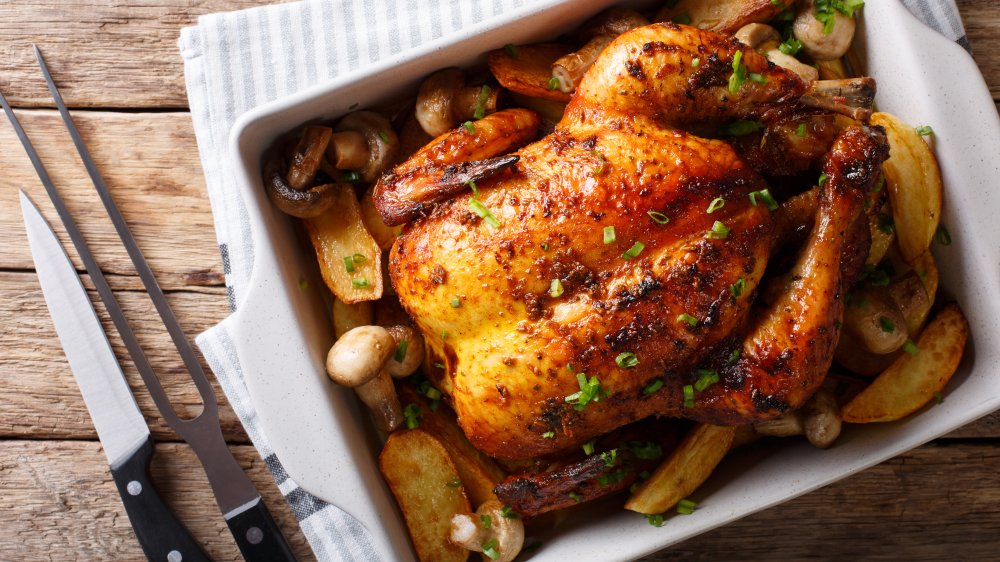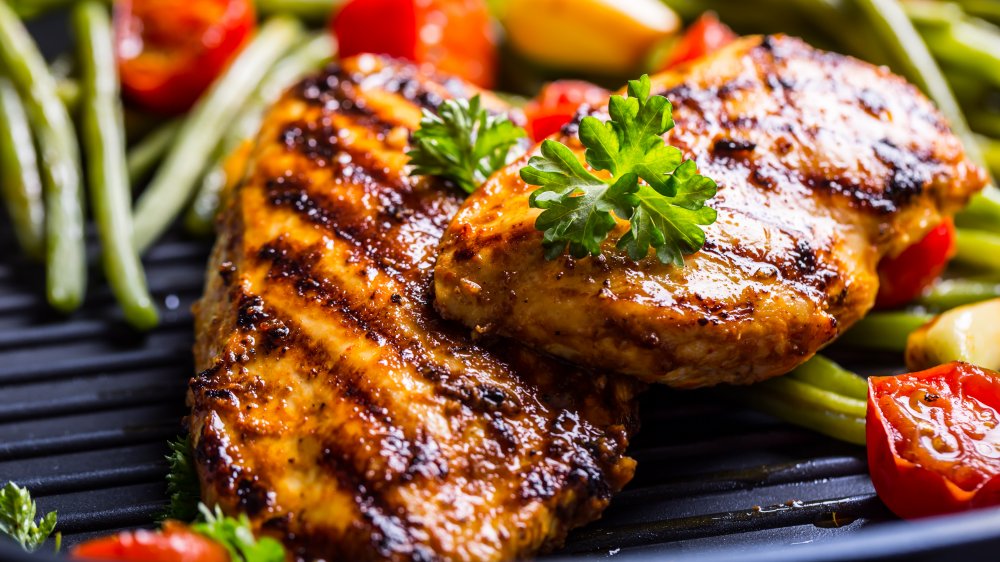This Is The Real Difference Between White Meat And Dark Meat
Did you grow up in a household where fights broke out at the dinner table over who got the white meat and who got the dark meat? Is one really tastier or healthier than the other? Once and for all, let's end the bickering and talk about the real difference between white and dark meat from chicken and turkey. First things first: White and dark meat exists on chicken and turkey because the muscles that make up the meat perform different actions for the bird, according to Best Food Facts.
Dark meat comes from muscles that are used to support the chicken's weight for extended presidios, such as the thighs and drumsticks (legs). The white meat is found in the lesser-used muscles of the breasts and wings, which engage in brief bursts of movement such as flapping. Meat scientist Dr. Janeal Yancey explains it to Best Food Facts by saying, "Dark meat cuts come from muscles that use more oxygen and have more iron. The iron is held in a protein called myoglobin, which gives it the darker color. White meat cuts come from muscles that metabolize energy with less oxygen, so they have less myoglobin and are lighter in color." But is one healthier than the other?
Is white meat healthier than dark meat?
Diet gurus have pushed skinless chicken breast for years, but is it really more nutritious than dark meat chicken? Well, not exactly, according to Trifecta Nutrition. A 4-ounce serving of skinless, boneless chicken breast does have fewer calories and fat than the same size skinless, boneless chicken thigh (140 calories and 3 grams of fat versus 190 calories and 9 grams of fat), but the chicken thigh has more zinc, iron, riboflavin, and niacin than the chicken breast. Both are generally nutritious, depending on your health requirements and personal taste. And, before you go falling for yet another chicken myth, think twice before removing that tasty chicken skin.
Speaking of taste, white meat has a milder, light taste, while dark meat has a fattier, "chicken" taste, according to Masterclass, where they suggest broiling, sauteing, grilling, or stir-frying white meat, since it has a tendency to dry out. Dark meat, on the other hand, is very forgiving and can stand the heat. So feel free to roast, braise, or fry dark meat until it's tender and juicy. Whichever type of chicken or turkey meat you prefer, always cook it until it reaches 165 degrees Fahrenheit to achieve perfectly moist – and safe – poultry.

